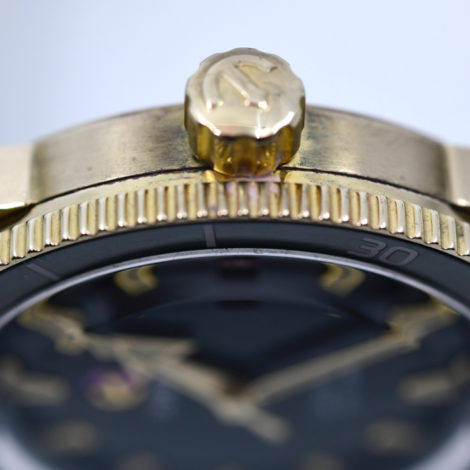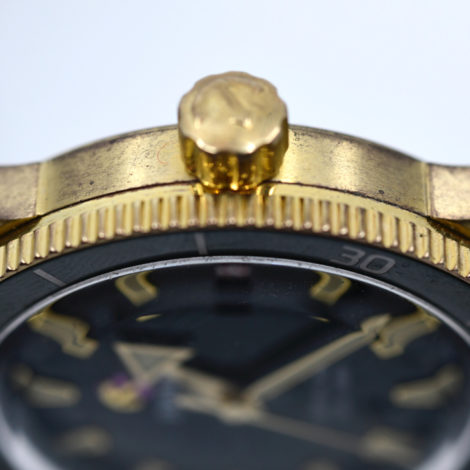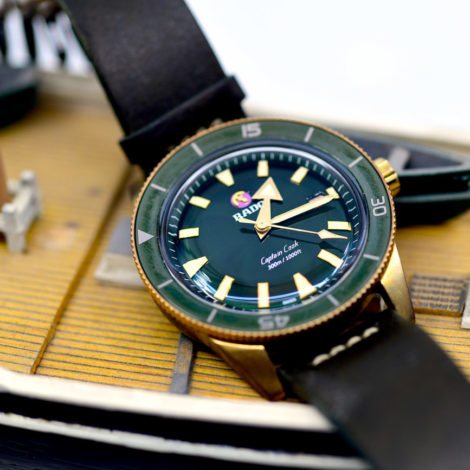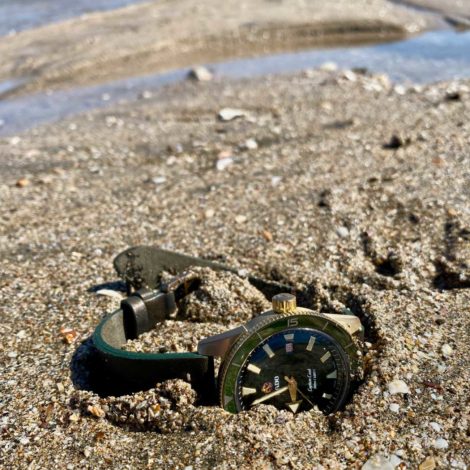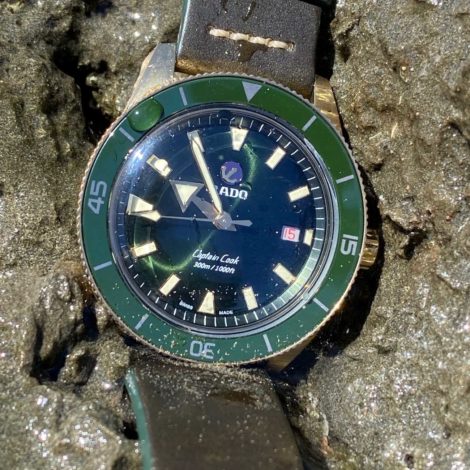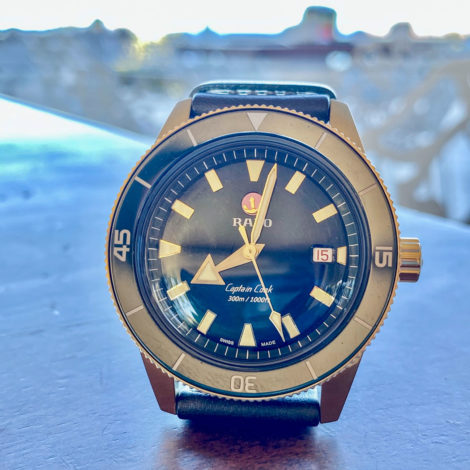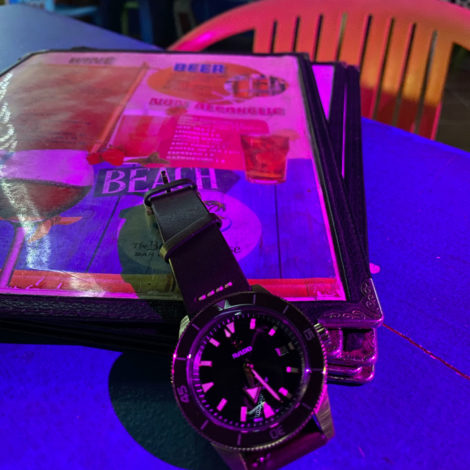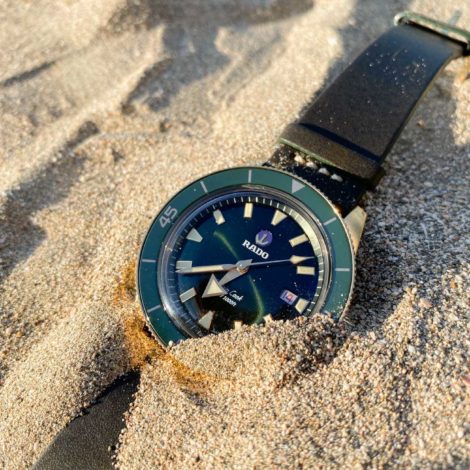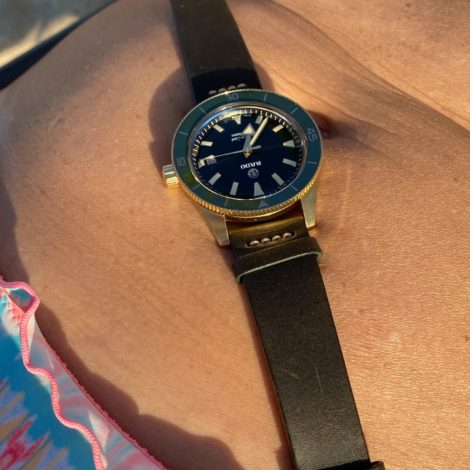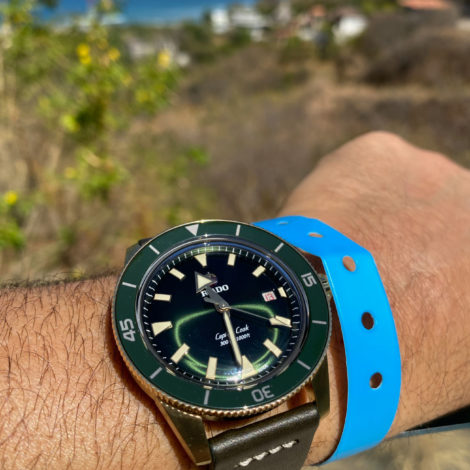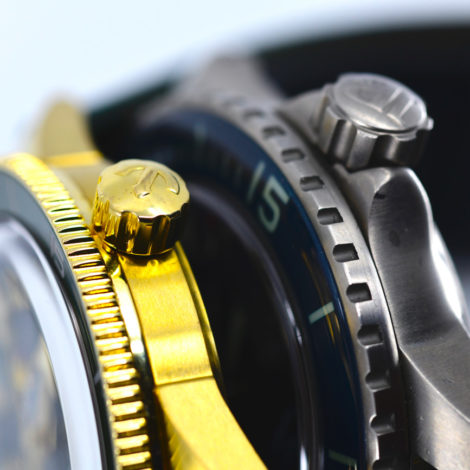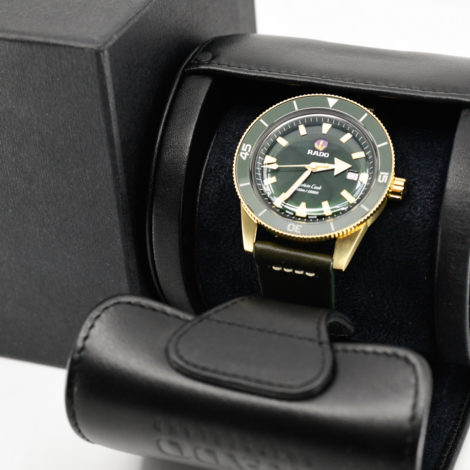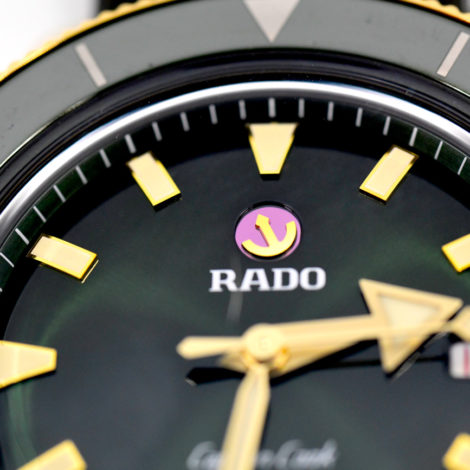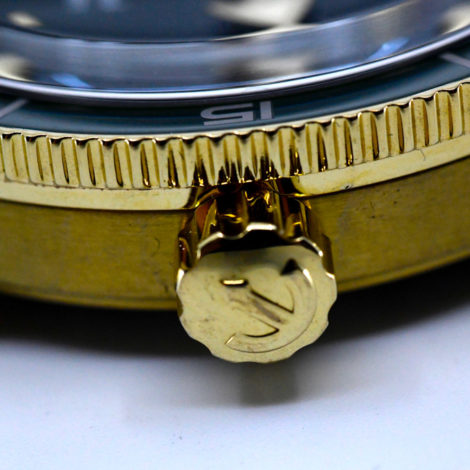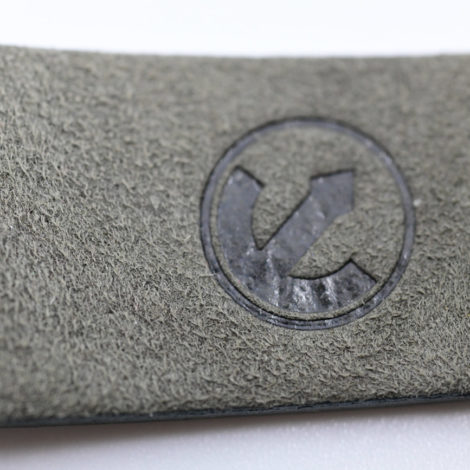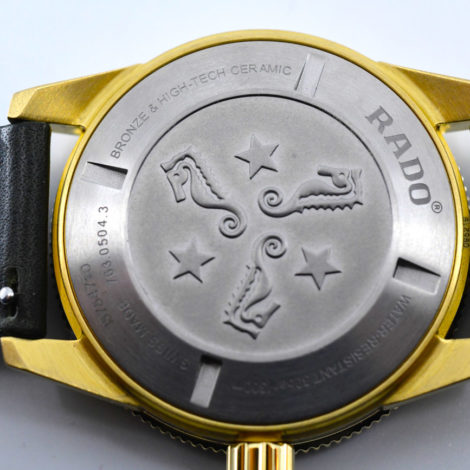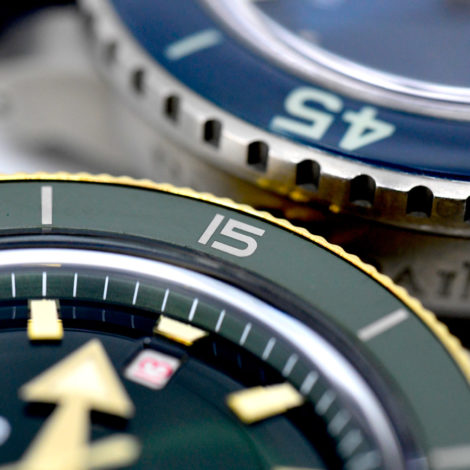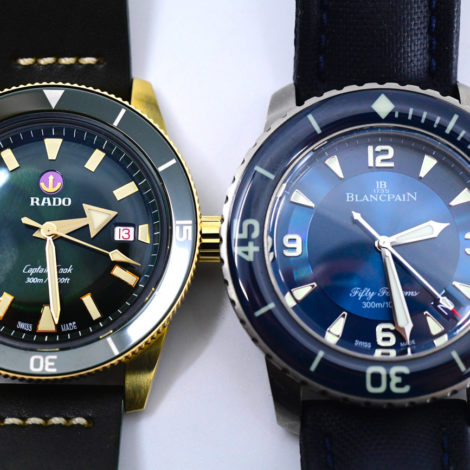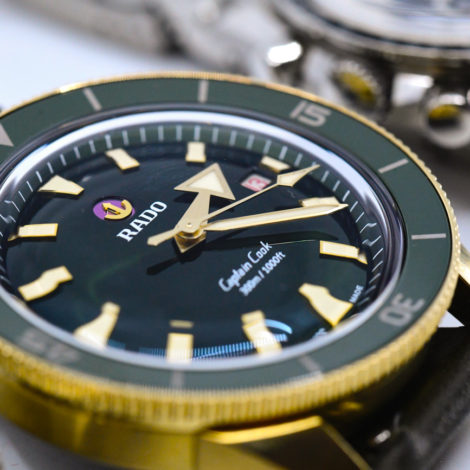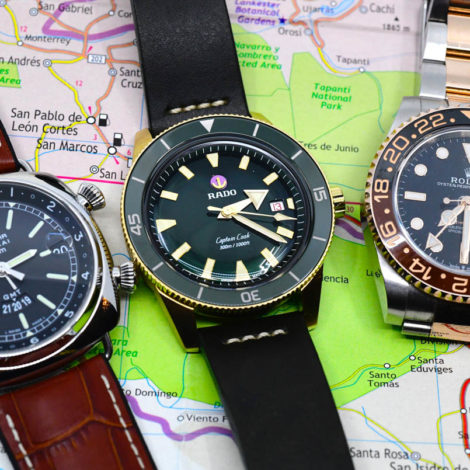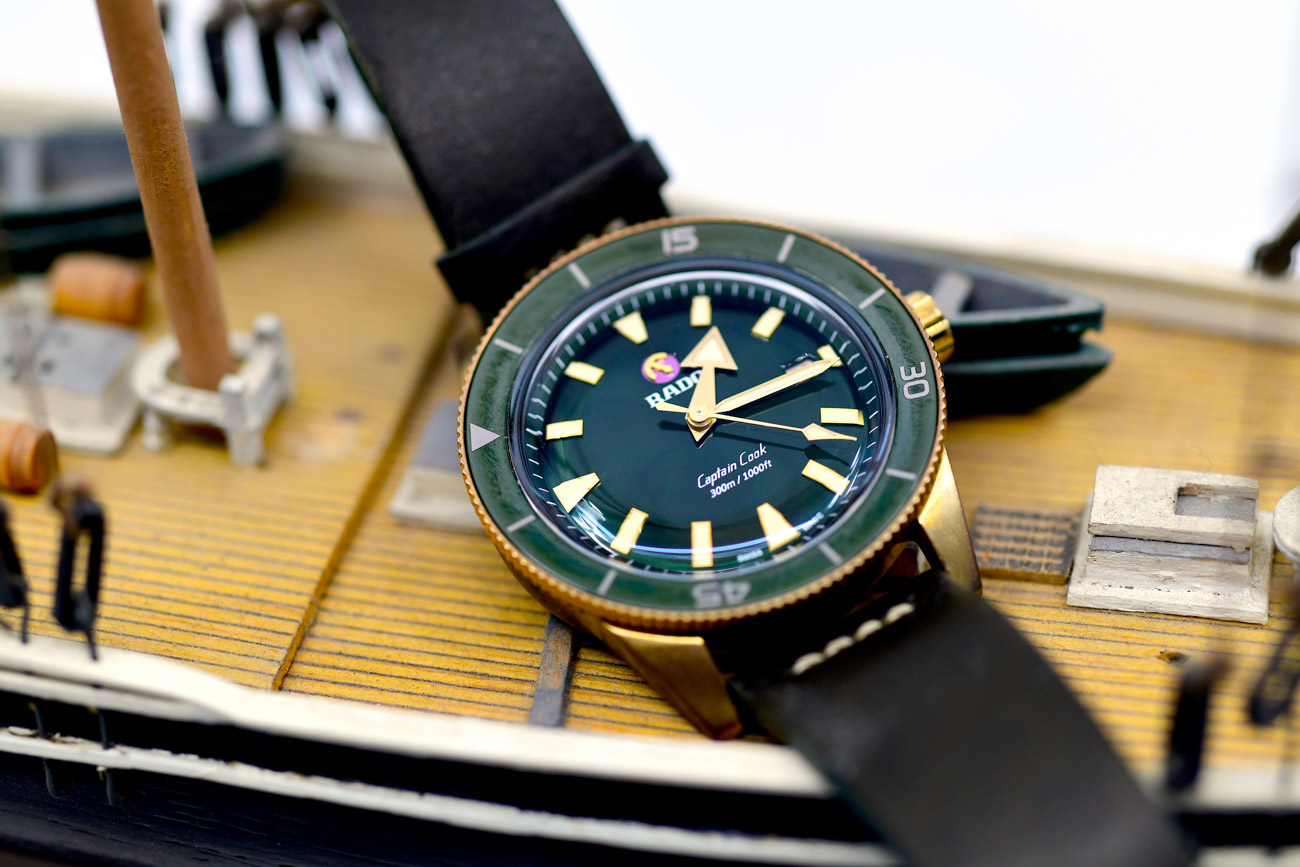
There is a crucial moment that every watch collector faces before a multi-day excursion: choosing watches to wear. My personal go-to for changing time zones includes a GMT for tracking home time and a rugged dive watch for everyday wear. Fate, in the form of a press release from Rado, showed up two days before I was scheduled to leave for Tamarindo, Costa Rica, with an offer to review its new Captain Cook dive watch, reference R32504315 | 01.763.0504.3.131 Rado Captain Cook Automatic Bronze with the 42mm-wide case. I told the very responsive Rado rep if he could get me the watch before I left, it would become my traveling companion on the trip for a hard-core review. Just hours before departure, I was unboxing this bronze beauty and tossing it in the carry-on bag. Welcome to the manifest, Captain.
The Blancpain 50 Fathoms and its counterpart, the Rolex Submariner, have collectively set the standard by which all other dive watches should be measured. Like the Eames chair, they sport all the elements, on functional and aesthetic levels, that serve to define the breed. Virtually every other dive watch developed in the past 70 years has drawn from the feature sets of these two watches. Rado’s reissue of its original 1960s Captain Cook diver teases elements of these classics, with updates that tastefully reflect popular contemporary treatments and materials.

Let’s get into it…
The Rado delivers a rich wrist statement, utilizing the green and gold of the old Marshall Field’s logo (not John Deere, thank you), and is a striking take on the traditional dive treatment. The Captain’s green dial is surrounded by a matching ceramic bezel and lives in a bronze case with a titanium back. While I would have preferred a matching color scheme on the bezel indices, the silver is subtle enough to work with the theme. Its dial is called “green sunray” in the press materials and is slightly domed, giving the high-gloss face a three-dimensional glean reminiscent of a highly polished fender on a British racing green Jaguar XK-120. Par for the vintage theme, the hands and markers are a cream colored Super-LumiNova. The dial also sports a swiveling gold anchor at 12 o’clock, a neat, very, very subtle touch that gives users an excuse to twirl the watch around and wonder, “Why is my anchor spinning? What does it mean?” Tres 60’s!
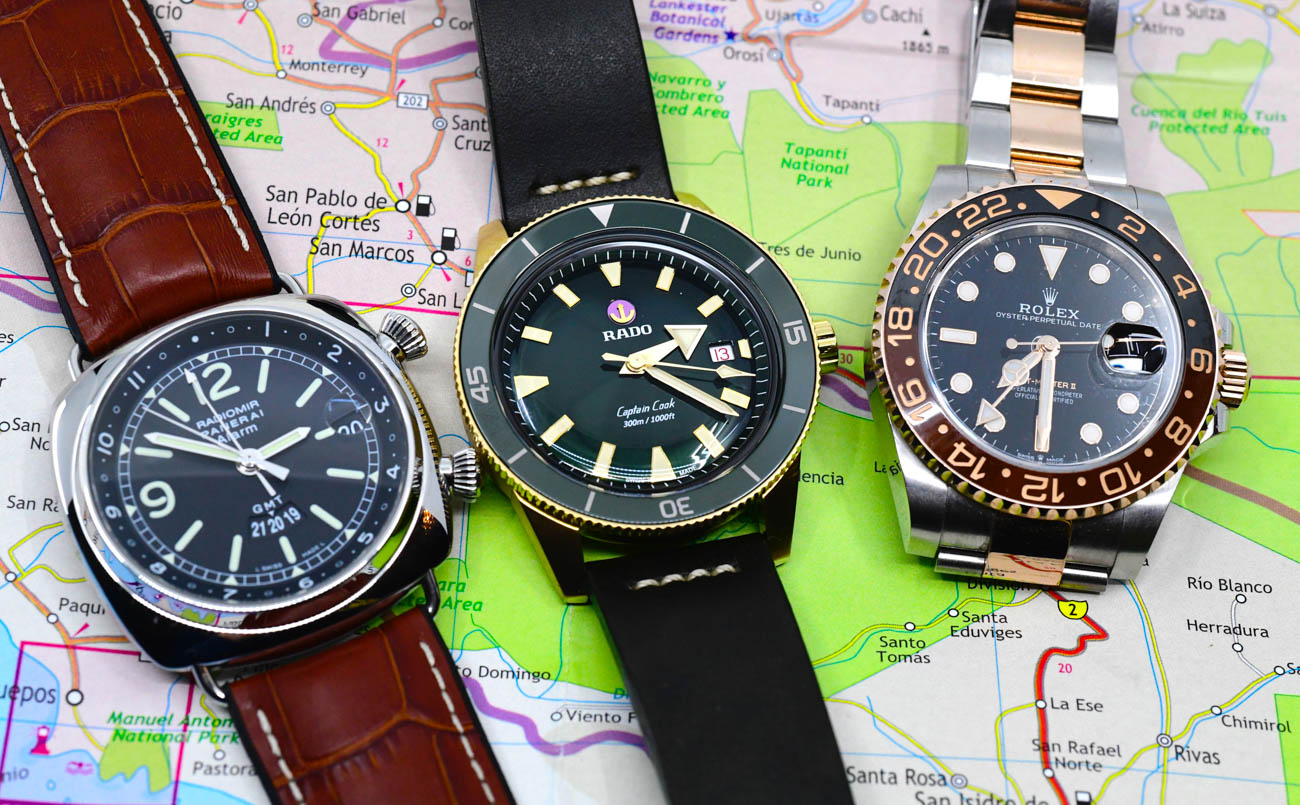
The Captain is waterproof to 1000 feet and powered by an ETA C07, automatic, 25-jewel, three-hand movement with a date at 3 o’clock, and up to 80 hours power reserve. This is the “Powermatic 80” movement with silicon balance spring, found in many models of Tissot, Certina and Mido watches. The movement is a no-nonsense performer, offering an impressive power reserve and anti-magnetic properties through the use of a silicon escapement. Ariel Adams of aBlogtoWatch reviews the steel version of this Rado Captain Cook 42mm watch on the bracelet here.
The payoff for owners of the Good Captain is found in the bronze case, a material that has been showing up in increased usage over the years. Unlike stainless steel or gold, that simply scratch and get dirty, bronze develops a unique patina as it’s worn. The result of the oxidation of the copper component of the bronze can appear as brown, black, red, blue or green. Costa Rica provided the perfect environment to see if the Captain could live up to its name as a sea going adventurer and emerge as a newly colored denizen of the not so deep seas.
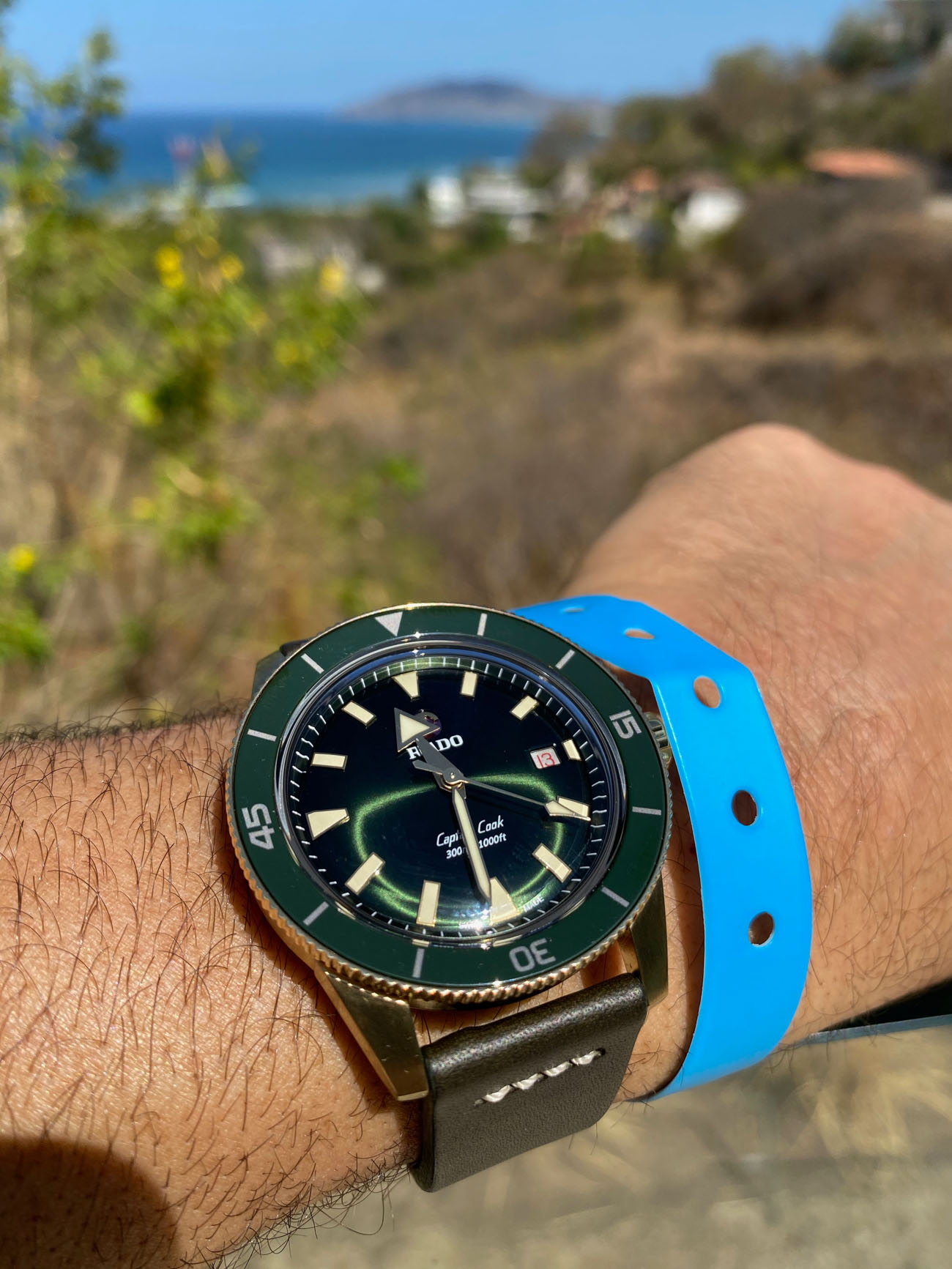
Wearing experience
The Captain looks and feels solid. The bezel has a nice loud ratchet sound that indicates things are properly aligned. It’s is a medium-weight timepiece, with a nicely unobtrusive 12.5mm x 42mm case. While I prefer a horned watch crown and more aggressive ridges on the bezel, the coin-edged style has a more subdued look and feel than, say, the Rado Hyperchrome Captain Cook 2017, with its 50 Fathoms-esque treatment. The watch is incredibly easy to read and maintains a night’s worth of luminescence. I’m a personal fan of the Captain’s titanium caseback because of weight savings and hypoallergenic properties.

The sample I received had a single-piece leather band and would be better served with a lined Horween, but that’s strictly a personal preference. If anyone was actually going to use this as a dive watch (probably 1/10th of 1% of the buyers), the strap and shallow ridges of the bezel would prove a problem underwater. However, for the moisture-averse who will more than likely purchase this product, that won’t be an issue.
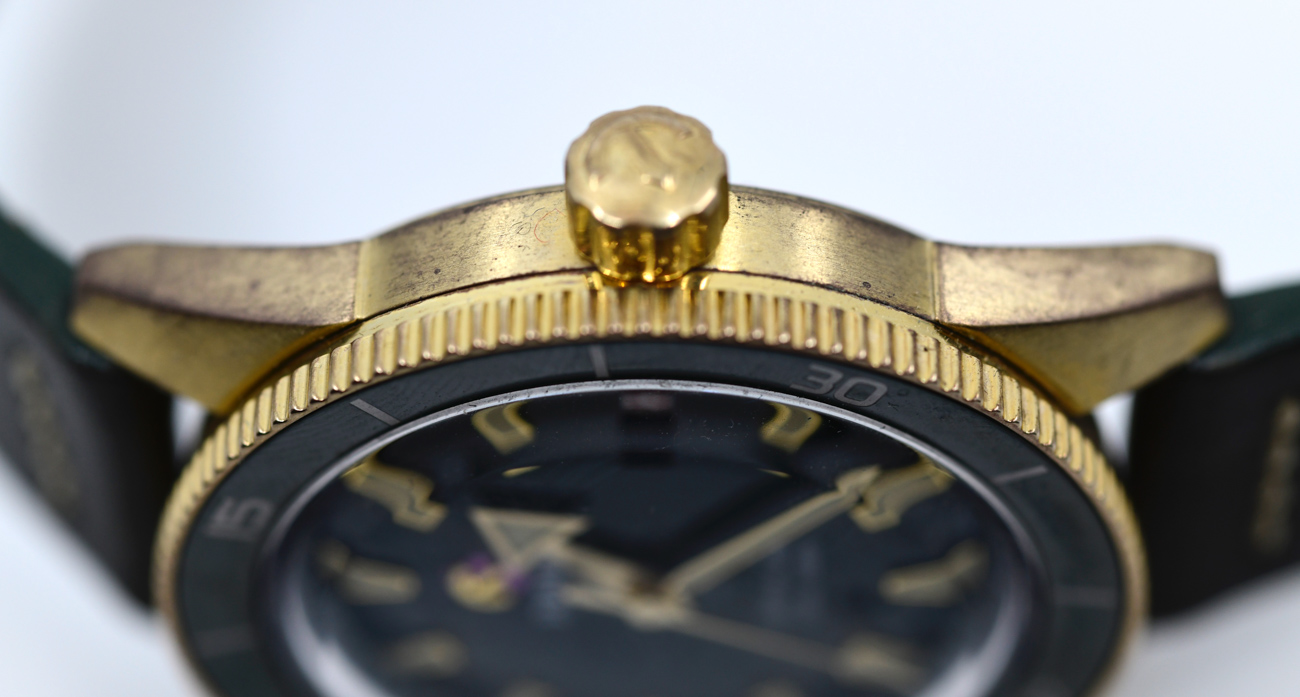

Given its pedigree as a dive watch, a la the original 60’s iteration, I intended to get the Captain wet and dirty, covered with sunscreen and oil, then hang it out in the sun to dry. To this end, the watch accompanied me in the surf, by the pool, up and down daily 10-mile walks through dusty hills, and was worn while sweating and spilling margaritas and tequila shots. Any dive watch that remains neat and clean and dry should be forcibly taken from its owner and that misguided individual barred from ever owning another watch with a water-resistant rating over one meter. But I digress.
The watch swam through the week of abuse with no undue scratching, scarring or unwanted mutating. The bronze case picked up a dull finish with some blackish highlights, answering the question of how it would tarnish. While the user’s manual states that the watch can be returned to Rado for cleaning (really), I found using metal polish worked just fine — see the before and after photos with minimal elbow grease.
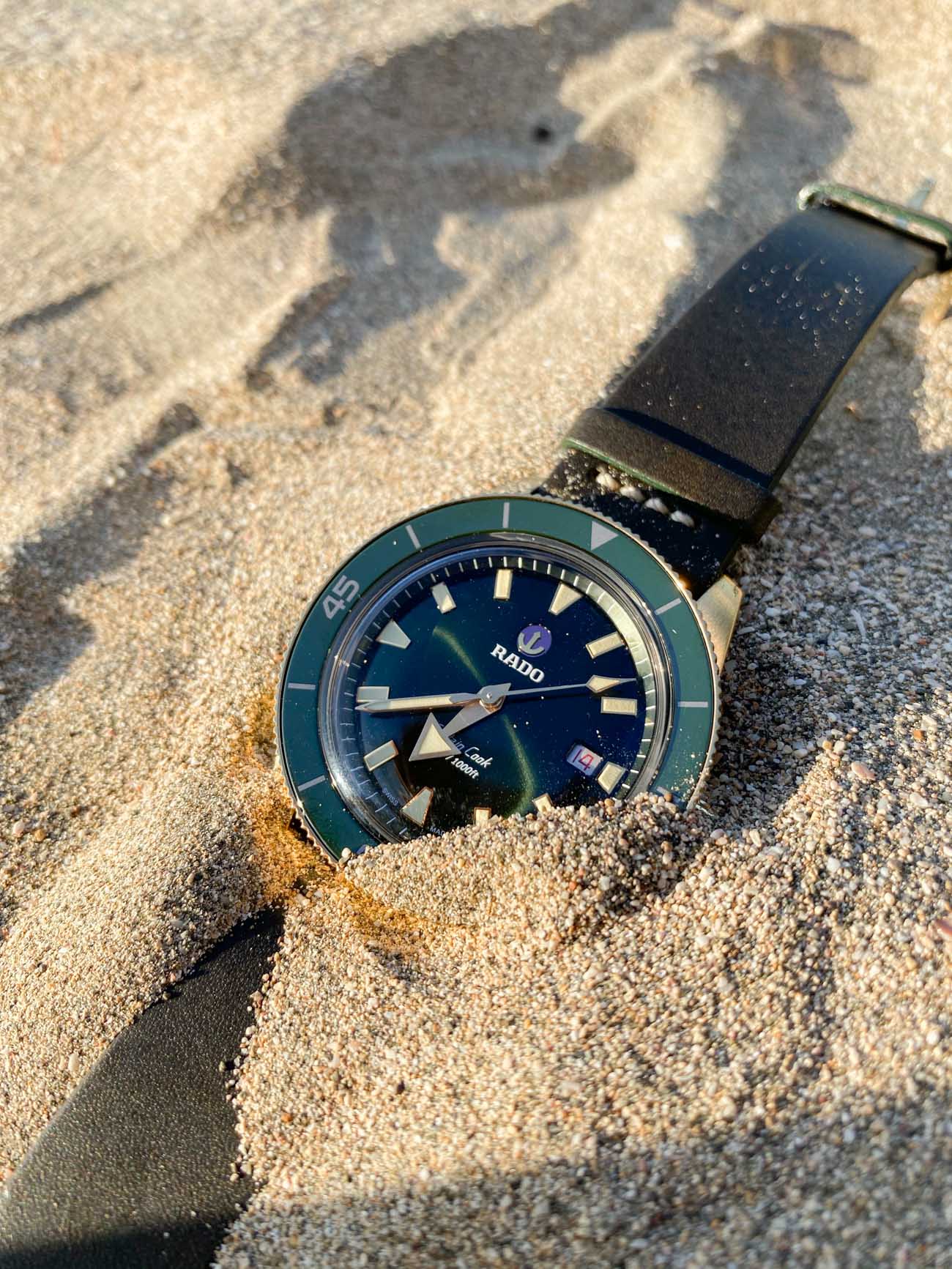
Would I buy this watch?
Absolutely — and for many reasons. It’s great-looking, in a non-blingy way, and punches well above its class for the price. Unlike stainless or gold watches, it feels organic. The bronze changes and reflects the activity level of the user. It features a whopping four anchor logos between the case and strap, and three starfish on the caseback — it would have been nice to see a mermaid as well, but who knows what the future may hold? It has a domed crystal and a groovy domed dial — a double dose of domage — awesome! And finally, it holds its value: Check out the used prices on eBay against the street price on this watch, (As a comparison, look at Romain Jerome, as well — a cringe-worthy value-dropper!)
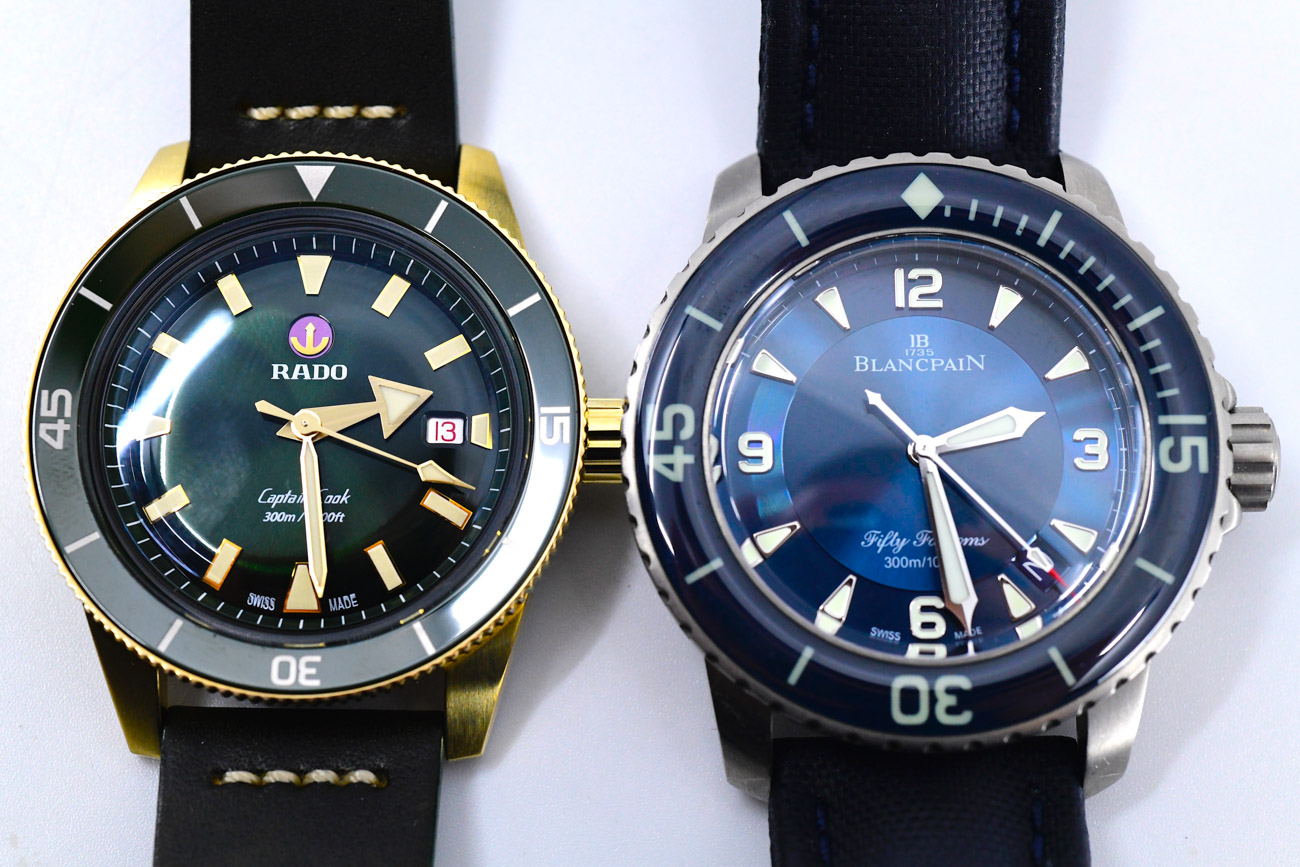
As a daily wear in dry conditions, the watch as configured with a leather strap will serve most users well; for those who actually wear dive watches for diving, I’d suggest investing in a metal bracelet model. The Captain was a great traveling companion, and kudos to Rado for delivering exceptional quality at a realistic price point. Price for the reference R32504315 | 01.763.0504.3.131 Rado Captain Cook Automatic Bronze is $2,600 USD. Learn more at the Rado website here.

